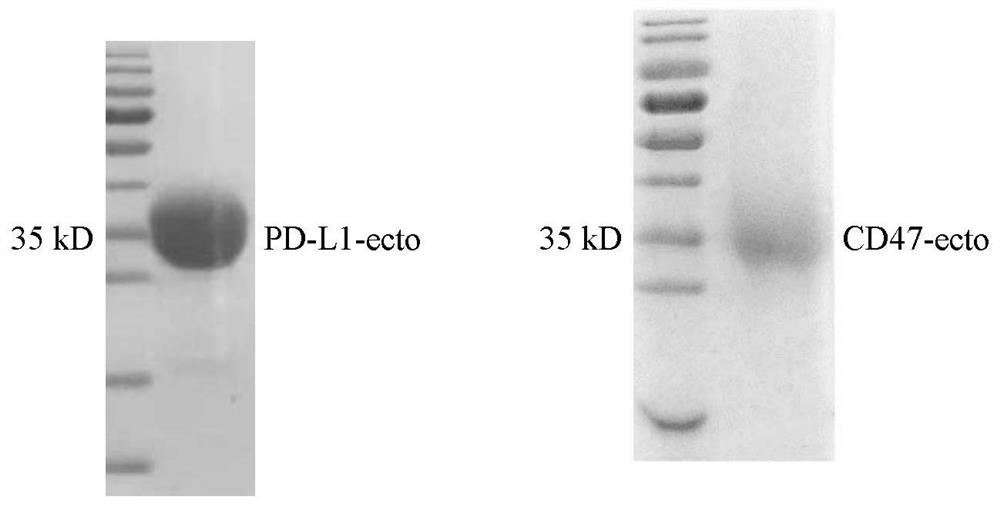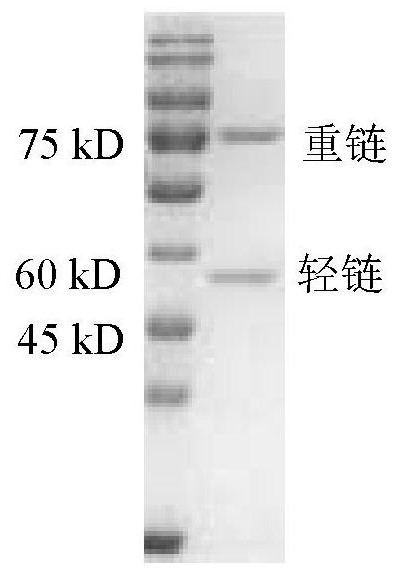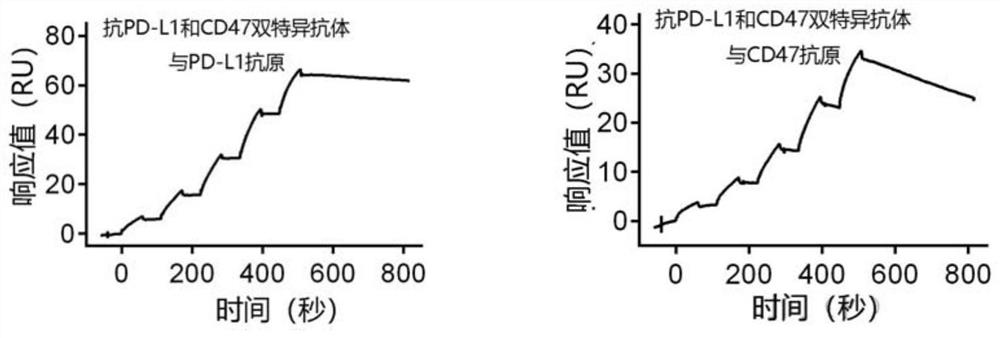Non-erythrocyte agglutination anti-PD-L1/CD47 bispecific antibody and application thereof in anti-tumour treatment
A PD-L1, bispecific antibody technology, applied in the medical field, can solve problems such as disease deterioration
- Summary
- Abstract
- Description
- Claims
- Application Information
AI Technical Summary
Problems solved by technology
Method used
Image
Examples
Embodiment Construction
[0039] PD-1 molecule is an important member of CD28 family, which also includes CD28, CTLA-4, ICOS and so on. PD-1 molecules are expressed in activated B cells, T cells, and bone marrow cells, etc., and are a type I transmembrane protein with a molecular weight of about 55kDa. Currently, PD-1 has two ligands, namely PD-L1 and PD-L2. PD-1 inhibits T cell activity by interacting with (PD-L1 and / or PD-L2). PD-L1 can be highly expressed on the surface of a variety of tumor cells. Through the interaction between PD-1 and PD-L1, it can inhibit the functional activity of tumor infiltrating lymphocytes, including TCR-mediated T cell proliferation and cytokine secretion levels Therefore, it is used by a variety of tumors as an important mechanism for tumor cells to escape the surveillance of the immune system. The use of antibodies to specifically block the interaction between PD-1 and (PD-L1 and / or PD-L2) can activate T cells in a suppressed state, release the function of T cells, an...
PUM
 Login to View More
Login to View More Abstract
Description
Claims
Application Information
 Login to View More
Login to View More - R&D
- Intellectual Property
- Life Sciences
- Materials
- Tech Scout
- Unparalleled Data Quality
- Higher Quality Content
- 60% Fewer Hallucinations
Browse by: Latest US Patents, China's latest patents, Technical Efficacy Thesaurus, Application Domain, Technology Topic, Popular Technical Reports.
© 2025 PatSnap. All rights reserved.Legal|Privacy policy|Modern Slavery Act Transparency Statement|Sitemap|About US| Contact US: help@patsnap.com



